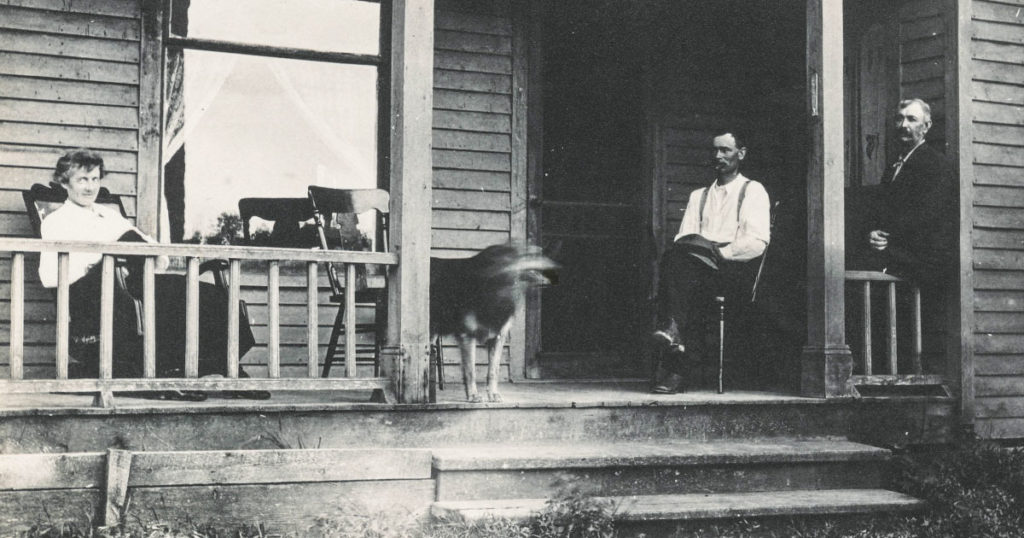
We were an eclectic bunch, as reflected in the music blasting from a porch two doors down—Meghan Trainor for the kids, Chuck Brown and Journey for their parents, and classic Stevie Wonder for, well, everyone. It was Friday night, two weeks into our COVID-19 social-distancing regimen, and the people on my block seemed as desperate as my wife and I were for interaction. (Talking to the cat gets old fast.) So a makeshift “porch dance party” was organized via group text, and promptly at seven P.M. our neighbors emerged from their houses, drinks in hand, to smile, move their bodies, and shout greetings from a safe distance. People who in normal times might not even wave to each other ended up taking to the sidewalk to perform the Electric Slide. The party proved a success, so much so that we agreed to do it again every Friday until the pandemic lifts and life goes back to normal.
I hesitate to admit it, but a part of me dreads that eventuality.
Please don’t misunderstand: all of us want COVID-19 to go the way of vanquished diseases like smallpox and polio, and as quickly as possible. I don’t mean to minimize the suffering going on out there. But if we can take something, anything, positive from this time of mass illness, death, and economic collapse, surely it’s our renewed sense of connection to our families, friends, and communities. Maybe it’s a porch party, a dissonant chorus ringing out of nearby doors and windows, a virtual happy hour with sequestered colleagues, or a video call with an old friend. Whatever form it takes, in this moment of forced isolation, social interaction has reestablished itself among our most pressing priorities. The question is for how long.
My block in Northwest Washington, D.C., is composed of houses built in 1919—mainly craftsman bungalows and four squares, all equipped with expansive front porches. I fantasized, when we bought our house, that its porch would become a perch from which we could watch the world go by in the company of neighbors, also on their porches, all of us alone on our domestic islands but together in a larger sense—with our collective attention focused on the street, one of the qualities of a healthy community that American urbanist Jane Jacobs described in The Death and Life of Great American Cities (1961).
But by the time we moved in, porch culture was already long dead, at least in our neighborhood, and the houses on my street seemed like relics of a friendlier time. To find out why, I need only have consulted historian Richard C. Thomas’s 1975 essay, “From Porch to Patio.” In the 19th century, he writes, the front porch was where people fled the heat of unairconditioned interior spaces, where young lovers got to be intimate while still under parental supervision, and where whole families spent time outside, greeting friends and neighbors who passed by on foot or by horse—either way, slowly enough to exchange a few words of greeting or gossip. In the 19th century, it “was important to know one’s neighbors and be known by them,” Thomas writes. “The porch was a platform from which to observe the activities of others. It also facilitated and symbolized a set of social relationships and the strong bond of community feeling.”
Changes in our larger society—the advent of electricity, cars, industrialization, and mass production, all of which led to population growth and mobility—heralded an end to porch culture. Young people fled the countryside, moving into cities and suburbs of tightly spaced, prefabricated, mostly identical houses where privacy became paramount, and the back-yard patio replaced the porch as the center of outdoor family life. As Thomas writes,
In communities with a high rate of mobility, one did not often want to know his neighbor. The constant turn-over of neighbors worked against long-term relationships which are essential to a sense of belonging. The patio, walled on one, two, or three sides, was a barrier for privacy and a means of self-expression. … Twentieth-century man has achieved the sense of privacy in his patio, but in doing so he has lost part of his public nature which is essential to strong attachments and a deep sense of belonging or feelings of community.
We in the 21st century have only accelerated this decline in social capital. Even were we to return to our front porches, would we look up from our phones? I have my doubts. But extraordinary circumstances can lead to unexpected developments. Slowly over the past few weeks, especially in the early evenings, I’ve noticed a reemergence of people from their houses—not to their sheltered back yards, but to front porches and stoops, where they wave and invite the neighborly interactions that so many of us have trained ourselves to avoid.
Small talk, gossip, a wave, a smile. Sometimes such things are all it takes to help us get through the day. Here’s hoping that these simple pleasures will outlive this time of national crisis. Our culture would be better for it.

